
Faisal I bin Al-Hussein bin Ali Al-Hashemi was King of Iraq from 23 August 1921 until his death in 1933. A member of the Hashemite family, he was a leader of the Great Arab Revolt during the First World War, and ruled as the unrecognized King of the Arab Kingdom of Syria from March to July 1920 when he was expelled by the French.
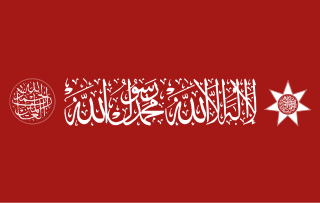
The Hashemites, also House of Hashim, are the royal family of Jordan, which they have ruled since 1921, and were the royal family of the kingdoms of Hejaz (1916–1925), Syria (1920), and Iraq (1921–1958). The family had ruled the city of Mecca continuously from the 10th century, frequently as vassals of outside powers, and ruled the thrones of the Hejaz, Syria, Iraq, and Jordan following their World War I alliance with the British Empire.
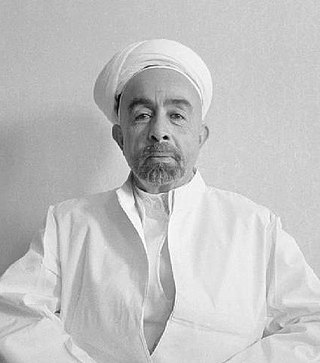
Abdullah I bin Al-Hussein was the ruler of Jordan from 11 April 1921 until his assassination in 1951. He was the Emir of Transjordan, a British protectorate, until 25 May 1946, after which he was king of an independent Jordan. As a member of the Hashemite dynasty, the royal family of Jordan since 1921, Abdullah was a 38th-generation direct descendant of Muhammad.

Ja'far Pasha al-Askari was an Iraqi politician who served twice as Prime Minister of Iraq in 1923–1924 and again in 1926–1927.
The McMahon–Hussein Correspondence is a series of letters that were exchanged during World War I in which the Government of the United Kingdom agreed to recognize Arab independence in a large region after the war in exchange for the Sharif of Mecca launching the Arab Revolt against the Ottoman Empire. The correspondence had a significant influence on Middle Eastern history during and after the war; a dispute over Palestine continued thereafter.
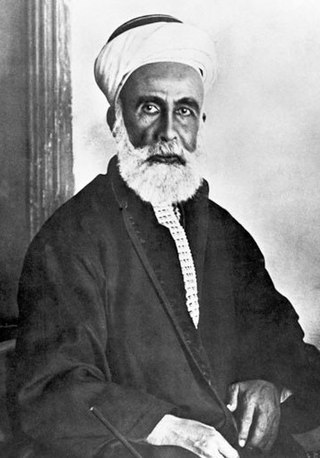
Hussein bin Ali al-Hashimi was an Arab leader from the Banu Qatadah branch of the Banu Hashim clan who was the Sharif and Emir of Mecca from 1908 and, after proclaiming the Great Arab Revolt against the Ottoman Empire, King of the Hejaz, even if he refused this title, from 1916 to 1924. He proclaimed himself Caliph after the abolition of the Ottoman Caliphate in 1924 and stayed in power until 1925 when Hejaz was invaded by the Saudis. He is usually considered as the father of modern pan-Arabism.

The Arab Revolt or the Great Arab Revolt was an armed uprising by the Arabs against the Ottoman Empire amidst the Middle Eastern theatre of World War I.
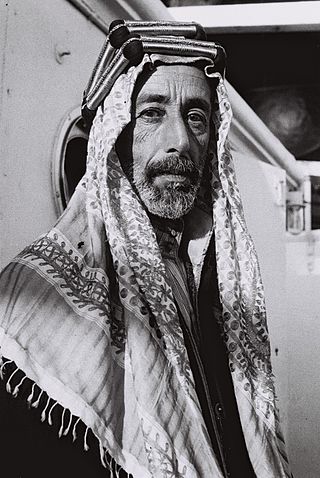
Ali bin Hussein, was King of Hejaz and Grand Sharif of Mecca from October 1924 until he was deposed by Ibn Saud in December 1925. He was the eldest son of King Hussein bin Ali and a scion of the Hashemite family. With the passing of the kingship from his father he also became the heir to the title of caliph, but he did not adopt the office and the style of caliph.
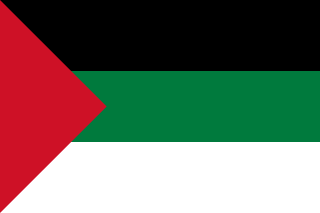
The Hashemite Kingdom of Hejaz was a state in the Hejaz region of Western Asia that included the western portion of the Arabian Peninsula that was ruled by the Hashemite dynasty. It was self-proclaimed as a kingdom in June 1916 during the First World War, to be independent from the Ottoman Empire, on the basis of an alliance with the British Empire to drive the Ottoman Army from the Arabian Peninsula during the Arab Revolt.
Lieutenant Muhammed Sharif al-Faruqi was an Arab Ottoman staff officer from Mosul. He was stationed in Damascus and played a pivotal role in the events leading up to the Arab Revolt.

Sir Vincent Arthur Henry McMahon was a British Indian Army officer and diplomat who served as the High Commissioner in Egypt from 1915 to 1917. He was also an administrator in British India and served twice as Chief Commissioner of Baluchistan. McMahon is best known for the McMahon-Hussein Correspondence with Hussein bin Ali, Sharif of Mecca, the McMahon Line between Tibet and India, and the Declaration to the Seven in response to a memorandum written by seven notable Syrians. After the Sykes-Picot Agreement was published by the Bolshevik Russian government in November 1917, McMahon resigned. He also features prominently in Seven Pillars of Wisdom, T.E. Lawrence's account of the Arab Revolt against the Ottoman Empire during World War I.
Medina, an Islamic holy city in Arabia, underwent the longest siege during First World War. The city of Medina was at the time part of the Ottoman Empire.

The Sharifian Army, also known as the Arab Army, or the Hejazi Army was the military force behind the Arab Revolt which was a part of the Middle Eastern theatre of World War I. Sharif Hussein Ibn Ali of the Kingdom of Hejaz, who was proclaimed "Sultan of the Arabs" in 1916, led the Sharifian Army in a rebellion against the Ottoman Empire with the ultimate goal of uniting the Arab people under an independent government. Aided both financially and militarily by the British, Husayn's forces gradually moved north through the Hejaz and, fought alongside the British-controlled Egyptian Expeditionary Force, eventually capturing Damascus. Once there, members of the Sharifian Army set up a short-lived monarchy known as the Arab Kingdom of Syria led by Faisal, a son of Sharif Husayn.
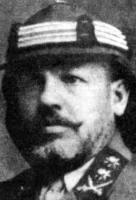
Ali Rida al-Rikabi was the First Prime Minister in modern Syria and was also the 3rd Prime Minister of Jordan.
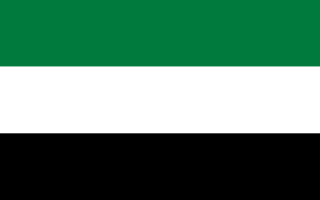
Al-Fatat or the Young Arab Society was an underground Arab nationalist organization in the Ottoman Empire. Its aims were to gain independence and unify various Arab territories that were then under Ottoman rule. It found adherents in areas such as Syria. The organization maintained contacts with the reform movement in the Ottoman Empire and included many radicals and revolutionaries, such as Abd al-Mirzai. They were closely linked to the Al-Ahd, or Covenant Society, who had members in positions within the military, most were quickly dismissed after Enver Pasha gained control in Turkey. This organization's parallel in activism were the Young Turks, who had a similar agenda that pertained to Turkish nationalism.History
Martyrs' Day is a Syrian and Lebanese national holiday commemorating the Syrian and Lebanese Arab nationalists executed in Damascus and Beirut on 6 May 1916 by Jamal Pasha, also known as 'Al Jazzar' or 'The Butcher', the Ottoman wāli of Greater Syria. They were executed in both the Marjeh Square in Damascus and Burj Square in Beirut. Both plazas have since been renamed Martyrs' Square.

The Arab Kingdom of Syria was a self-proclaimed, unrecognized constitutional monarchy existing briefly in the territory of historical Syria. It was announced on 5 October 1918 as a fully independent Arab constitutional government with the permission of the British military. It gained de facto independence as an Emirate after the withdrawal of the British forces from OETA East on 26 November 1919, and was proclaimed as a Kingdom on 8 March 1920.
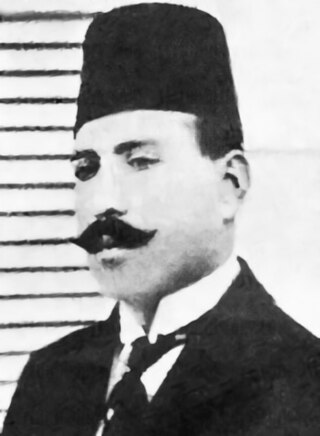
Nasib al-Bakri was a Syrian politician and nationalist leader in the first half of the 20th century. He played a major role in establishing al-Fatat, an underground organization which sought the independence and unity of the Ottoman Empire's Arab territories. As the chief envoy between al-Fatat and the Hejaz-based Hashemites, al-Bakri became a close aide to Emir Faisal when the latter became King of Syria following the success of the 1916 Arab Revolt. Al-Bakri opposed the establishment of the French Mandate of Syria and became one of the chief commanders of the Great Syrian Revolt, leading the rebels' brief capture of Damascus. He escaped a death warrant in Syria in 1927, but returned the following year after being amnestied.

Establishment of the Emirate of Transjordan refers to the government that was set up in Transjordan on 11 April 1921, following a brief interregnum period.
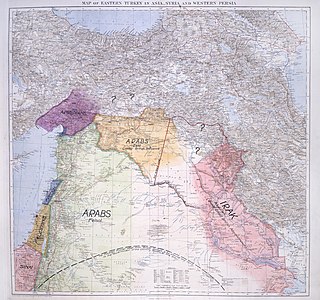
The Sharifian or Sherifian Solution, was an informal name for post-Ottoman British Middle East policy and French Middle East policy of nation-building. As first put forward by T. E. Lawrence in 1918, it was a plan to install the three younger sons of Hussein bin Ali al-Hashimi as heads of state in newly created countries across the Middle East, whereby his second son Abdullah would rule Baghdad and Lower Mesopotamia, his third son Faisal would rule Syria, and his fourth son Zeid would rule Upper Mesopotamia. Hussein himself would not wield any political power in these places, and his first son, Ali would be his successor in Hejaz.

















